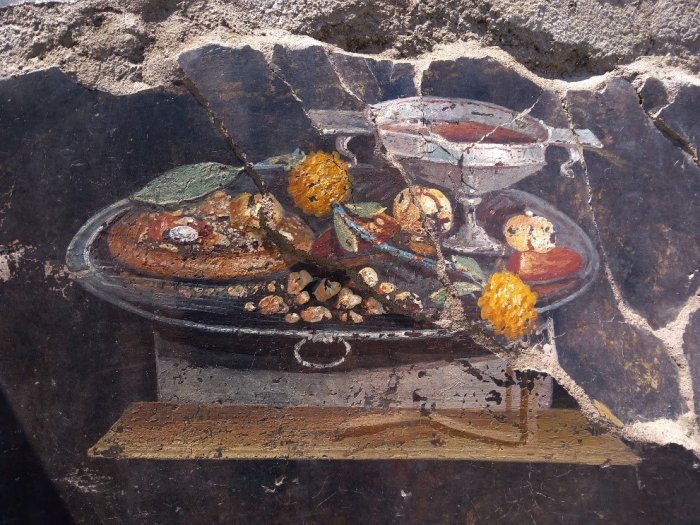Jan Bartek – AncientPages.com – A 2,000-year-old fresco discovered on the wall of a house in the ancient Roman city of Pompeii depicts what could be described as a distant ancestor of modern Italian pizza!
Italy’s Culture Ministry said in a press statement it is not a pizza, strictly speaking, given that some of the most characteristic ingredients were missing, namely tomatoes and mozzarella. However, the resemblance to the modern dish is obvious.

Credit: Ministero Della Cultura
The fresco was discovered in the hall of a house with a bakery attached to it, and on the silver tray, we can see various fruits and wine.
Furthermore, on the same tray are dried fruit and a garland of yellow strawberry trees next to dates and pomegranates. This kind of image, known in ancient times with the name xenia, was inspired by the “hospitable gifts” offered to guests according to a Greek tradition dating back to the Hellenistic period (3rd-1st century BC).
About three hundred of these representations are known from the Vesuvian cities, which often also allude to the sacred sphere in addition to that of hospitality. Without that, among the attestations found so far, there is a precise comparison for the recently discovered fresco, which is also striking for its remarkable quality of execution.
From a pᴀssage in Virgil’s Aeneid (book VII, v. 128 ff.), we can deduce the positioning of fruit and other products of the fields on sacrificial loaves that act as “tables”: when the Trojan heroes eat after fruit, even loaves used as containers (tables), realize in the Virgilian epos that the prophecy according to which they would find a new homeland has been fulfilled, when “driven to unknown shores, exhausted of all food,” hunger would have led to “devour even tables.”
“Pompeii never ceases to amaze. It is a casket that always reveals new treasures,” Gennaro Sangiuliano, the Minister of Culture, said while emphasizing the importance of protecting and developing the Pompeei heritage.
Written by Jan Bartek – AncientPages.com Staff Writer





